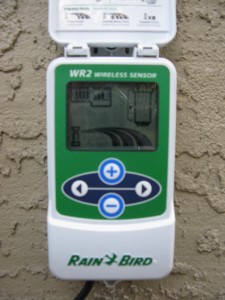First we need to understand what these terms mean. A traditional system means there is a wire for each valve plus your common. In other words, for a conventional multi-wire system, you run one common wire plus a hot wire from every valve in the system back to the controller.
In a traditional multi-wire system, you run one common wire plus a hot wire from every valve in the system back to the controller. This means you need to use much more wire, and with the growing cost of copper, this can potentially blow your client’s budget.
Generally a 2-wire system is only comprised of two wires. These two wires both originate at the controller then run to a decoder installed at the first valve in the system. Then the same two wires run to the next decoder and valve combination and so on throughout the property, therefore using half the amount of wire.
One advantage of having a two wire system on commercial irrigation systems versus the traditional system is you end up installing decoders which become the source of power to operate the valve. A two wire system does not necessarily put out the power that the traditional system does, and gives a signal that only the certain decoder will understand.
Since decoders can be positioned anywhere along the path, it is simple to assign decoder stations because they do not have to be assigned in physical order. For example, station 3 could be between 1 and 2.
Irrigation systems can be easily expanded or subdivided after the original installation without running spare wires, or retrofitting new wiring back to the controller. The installer simply finds the closest point in an existing wire path and splices in a new decoder station whenever additional valve control is desired.
Less wire means fewer problems with the surrounding elements. Exposure to shovels, rodents, and even lightning is minimized with 2-wire irrigation systems.
Many irrigation systems experience problems over time due to degradation or faults in the field wiring. The industry has evolved, and there are new techniques and devices to simplify fault-finding. In decoder wiring, there are fewer wires to troubleshoot. Some brands offer handheld devices to aid programming and diagnostics of decoders, which can save many man-hours. A forty-station cut wire path would require several hours to repair, while a 2-wire path would require one splice and waterproof wire connection.
Here is a perfect example of how the two wire system is better. Imagine a residential area with 1200 addresses with a community irrigation system. In a traditional irrigation system, 200 zones means 200 plus wires in the ground. In the two wire irrigation system, the sequence is held by the wires, so service down the road is easier, and much easier to troubleshoot and maintain.
We recommend Rainbird and Hunter systems for most of our sprinkler irrigation projects. The cost of the product is higher, but the cost outweighs the cost to install the product. You get what you pay for.
Thank you for stopping by the Hessenauer Sprinkler Repair and Irrigation blog and website. Contact us today at 407-302-2227 for an estimate on any sprinkler irrigation projects you may have on the horizon. Bookmark us and be sure to come back soon!

